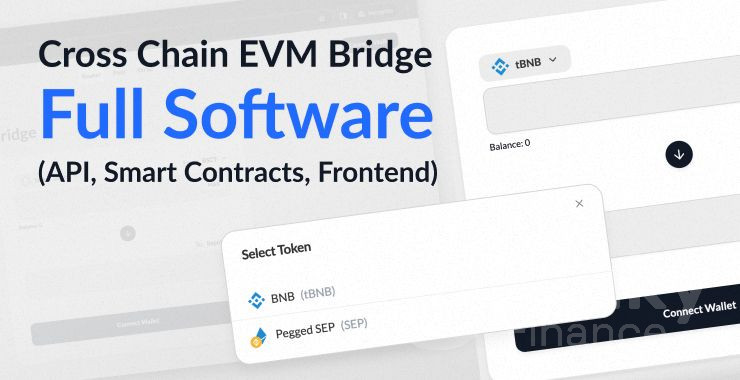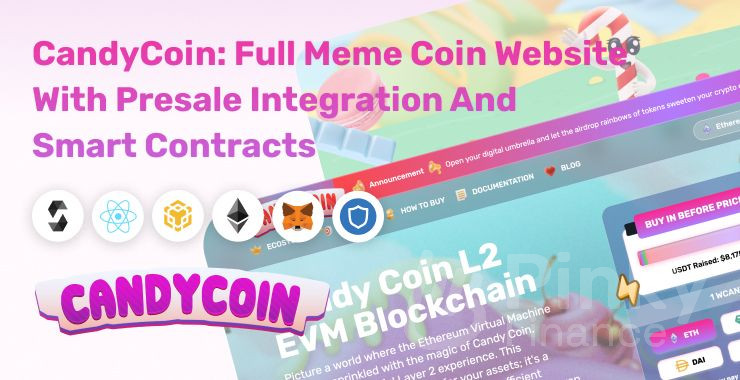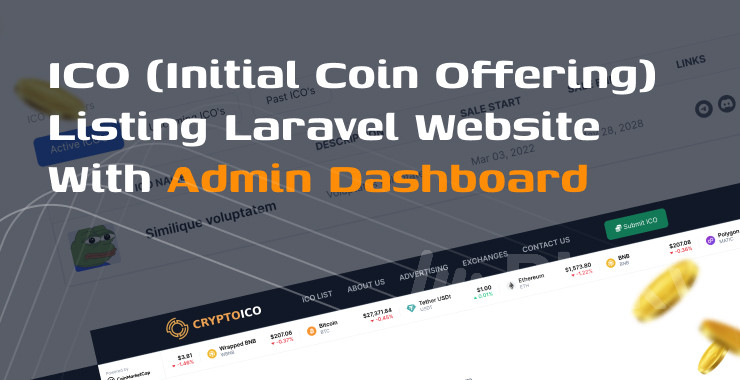Cross Chain EVM Bridge Full Software (API, Smart Contracts, Frontend)

Overview
Cross Chain EVM Bridge Full Software (API, Smart Contracts, Frontend) is a fully ready functional EVM Bridge Software that you can use for your own Blockchain to swap tokens between any EVM Blockchain, for example: Ethereum USDT <--> Your Blockchain USDT. You can add any tokens and as many Blockchains you need.
This Bridge needs to have some amount as a Liquidity on the contract for each token on both chains in order to work - you can inflate the liquidity any time, and start with a lower amount. It will show to the end-user a warning that currently bridge liqudity is not enough in case your contract will not have enough of a balance.
What Is EVM Bridge?
A cross-chain Ethereum Virtual Machine (EVM) bridge is a technology that enables interoperability and communication between different blockchain networks, particularly those that support the EVM. The Ethereum Virtual Machine is a runtime environment for executing smart contracts on the Ethereum blockchain, and it has become a standard for decentralized applications (DApps). The concept of a cross-chain EVM bridge arises when you want to connect or bridge the gap between two separate blockchain networks, both of which support the EVM. This allows assets and data to move seamlessly between these blockchains, enhancing overall interoperability in the decentralized ecosystem.
Why My Blockchain Need a Bridge?
- Asset Transfer and Interoperability: New blockchains may want to facilitate the transfer of assets, tokens, or data between their chain and established blockchains. A bridge allows users to move assets seamlessly across different blockchain networks, enhancing interoperability.
- Access to Existing Ecosystems: If a new blockchain supports the Ethereum Virtual Machine (EVM) or another popular blockchain's standards, a bridge can provide access to the existing ecosystem of decentralized applications (DApps) and services on those networks. This can attract developers and users familiar with established platforms.
- Liquidity and Market Expansion: By connecting to other blockchains, new projects can tap into larger liquidity pools and expand their market reach. A bridge enables users to access decentralized exchanges, lending platforms, and other financial services available on connected blockchains.
- Cross-Chain Smart Contracts: New blockchains may want to leverage the capabilities of smart contracts on other chains. A bridge allows for the execution of cross-chain smart contracts, enabling more complex and diverse decentralized applications.
- Enhanced Security and Resilience: Bridging with established blockchains can provide additional security and resilience. If a new blockchain is interoperable with multiple networks, it becomes less reliant on the health and security of a single chain.
- Community Growth: Interoperability fosters collaboration and community growth. By allowing users and developers to interact with various blockchains, a new blockchain can attract a broader and more diverse community.
- Easing Migration: For projects considering migration from one blockchain to another, a bridge can provide a transition period where assets and functionalities can still be accessed on both chains, mitigating disruptions for users and stakeholders.
Tech Stack
- React JS Frontend
- NODE JS API
- Solidity Smart Contracts
- Tailwindcss
Requirements
- Mongodb
- Node JS
- Crypto Wallet
- Code editor (VS Code)
If you have any questions feel free to contact our Support Team on Telegram: @zilab_technologies
✅ Including Technical Support
✅ Trusted Seller
✅ Full-source code
✅ Reviewed by Pinky Finance Devs
✅ Instant File Download
✅ Fully Decentralized File Purchase
Information
| Buy product on | Binance Smart Chain  Polygon Mainnet  |
| Release date | 16 Nov 2023 |
| Software version | 1.0.0 |
| Tags | Blockchain Bridge Smart Contract API React JS |
Current Price = $0.075
Next Price = $0.085
BUY IN BEFORE PRICE INCREASE
Other Products | Recommend
.jpg)


.png)